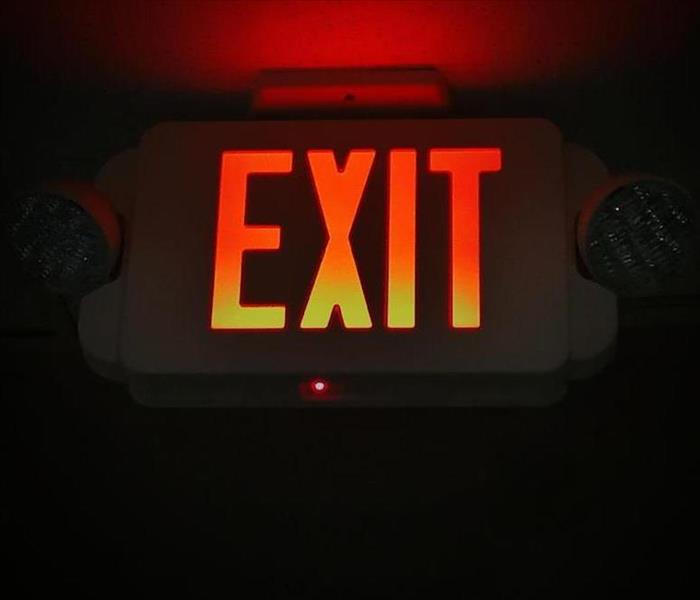Do You Have An Emergency Exit Plan For Your Business?
11/4/2020 (Permalink)
The threat of an emergency, such as a fire or a flood, can be compounded by panic and chaos if you aren’t prepared, and injuries and even more damage can be the unfortunate result. You can prevent this kind of thing by putting in place a detailed emergency evacuation plan. A high-quality evacuation plan will help prepare you and your workforce in the event of any kind of emergency that could happen on your business premises.
Do you have an emergency evacuation plan for your business? The law requires you to have a plan in place, so if the answer is no, or if you need to revisit the one you have, we have some things to share today for you to think about while you are creating a fire evacuation plan.
Location. It has been reported that an average of 3,000 fires occur in office properties per year, and most of those fires were caused by faulty cooking equipment, intentional acts, or electrical malfunctions. Your business may be located near a river or other body of water or perhaps on a flood plain, so you will want to factor possible flooding into your exit plan. It may be that you live in an area prone to tornadoes and violent weather, so take this into consideration when you are designing your plan. These are some of the areas to pay special attention to in your business; make sure you understand all the specific threats in your area and on your particular premises.
Leadership. Your employees will need people to look to for guidance and reassurance during an evacuation. Choose those you believe you can rely on to be responsible and create a chain of command. These leaders will be the ones who lead everyone to safety, handling communications, and ensuring that even the most vulnerable on your team are safe. Designate volunteers who are willing to learn about and operate fire extinguishers correctly, should the need arise.
Communication. Designate someone to handle the job of calling the fire department and getting information to employees, customers, news media, and any other entities such as the community, organizational management, suppliers, transportation partners, and government officials. Whoever you choose will need a robust, multi-channel communication system, as the chaos of a disaster can mean people will not necessarily be thinking clearly and may miss important information. Being able to communicate through email, phone, text, and mobile app will ensure your communication gets to everyone in a timely manner.
Route. A good emergency evacuation plan for your business will use primary and secondary escape routes, and clear signage should mark all the exit routes. Make multiple maps and post them so all your employees know the evacuation routes to the safe spot(s) you have designated.
Tools. With respect to a fire, it is recommended that you refill reusable fire extinguishers every 10 years and replace disposable ones every 12 years. Also, make sure your employees know where the fire extinguishers are located in the workplace. While you’re at it, make sure all tools, such as fire alarms, emergency lighting, escape ladders, and crowd control tools, are up-to-date and operational at all times wherever applicable. Create and maintain a first aid kit that is well and adequately stocked for the size and makeup of your workforce, and ensure that it is inspected regularly for expired or used medicines.
Drills. Regular fire drills will minimize confusion through repetition, giving your employees a clear idea of how a real evacuation should work. A safe outcome is more likely when everyone knows what is happening.
Here at SERVPRO of South and Northwest Grand Rapids, we care about you and your business, and we care about the safety of your workforce, too. If you need help with cleanup after any emergency, such as a fire or flood. If you have experienced fire damage or water damage, we are here to help. We can get your home and business Certified: SERVPRO Cleaned, too! Ask us how.




 24/7 Emergency Service
24/7 Emergency Service
